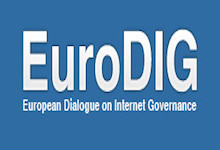EuroDIG 2017 – Community connectivity: Empowering the unconnected
7 Dec 2016 16:00h - 17:30h
Event report
Ms Maarit Palovirta, Internet Society, moderator of the workshop, referred to the latest EU Digital Progress Report. According to the report, an unsatisfactory quality of connectivity, both in urban and rural areas, is still a problem felt across Europe.
Mr Jan Droege, Director of the European Commission Broadband Competence Offices Support Facility (BCO-SF), showed a short video on the work of BCO-SF. He talked about the community’s interest in the co-operative model and the creation of BCO-SF to address related issues. In the model, the community takes the matter in its own hands, funds the project as a co-operative, and builds the needed infrastructure itself. The emphasis is on the communal overcoming of problems with the broadband connection. The European Union has investment schemes for underserviced regions, but not all funds get used. A lack of skills is one of the reasons for this, so the BCO-SF was created to provide training to member states in need, Droege stated.
Ms Lise Fuhr, Director General of European Telecommunications Network Operators’ Association (ETNO), gave the business stakeholder group point of view. Fuhr said that discussing new investment models is important for the industry. ETNO members currently finance 70% of investment capital in broadband in Europe and more is needed for new technologies. The European Commission is also now allocating funds for 5G networks. She acknowledged that there is no model appropriate for all areas, so ETNO welcomes models such as community investment, industry-driven, or mixed. Fuhr also addressed the issues of unallocated spectrum, saying that it is a limited resource in which many have an interest.
To explain why the community model exists and how it operates, Mr Luca Belli, Head of Internet governance, FGV Direito Rio, recommended the guide called Commotion Construction Kit. According to Belli, this model is a bottom-up crowd-funding initiative. The focal point is that the community designed it to fit its particular needs. It was created because of market failure in areas where companies are not interested, and because of the unused subsidies. Belli stressed the benefits of the model, such as new jobs and the development of systems along with new infrastructure. Building the network together also reconnects community members. Sharing best practices is crucial for spreading the model, Belli said. The traditional operators will remain the backbone of connectivity, and less regulation could help gain greater interest in the model from the community.
Mr Giorgi Cherkezishvili, Deputy Minister, Ministry of Economy and Sustainable Development of Georgia, explained how his country implemented the model and brought connectivity to the unconnected. The government wanted to provide high speed Internet, but the broadband providers did not reach all communities, especially in the mountains. The initiative came from non-governmental organisations to lead the project. The government provided support and funds because, according to Cherkezishvili, connectivity brings with it entrepreneurship and governments need to help its development. He recognised the importance of a favourable regulatory environment for the model.
Mr Ucha Seturi, Executive Director, Small and Medium Telecom Operators’ Association of Georgia, noted that the Tusheti project is a successful initiative because of its co-operative nature. The idea of the Internet Society, implemented by its Georgian chapter, is an example of co-operation between the local community and stakeholders. Seturi pointed out that local members funded the project, and it allowed the region to be connected online for the first time. The whole new network is based on solar energy, and represents the social responsibility that the local community members feel, according to Seturi.
Related event

